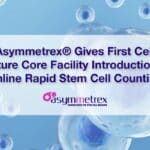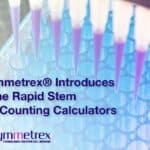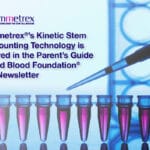Asymmetrex Director Edits Newly Released Book on Human Stem Cell Toxicology
Today, August 11, 2016, Royal Society of Chemistry Publishing in the UK released a new volume that is a first scholarly treatment of the emerging research and medical discipline of human stem cell toxicology. The 175 years old organization, which is the oldest chemical society in the world, enlisted Dr. James L. Sherley, the founder and director of Asymmetrex, LLC in the US, to develop and edit the new text.
Human Stem Cell Toxicology debuts today from the revered publishing house of the Royal Society of Chemistry in the United Kingdom. As a first publication of a collection of scholarly treatments of this increasingly important topic in environmental health sciences and stem cell medicine, the new book meets very well the RSC standard of advancing excellence in the chemical sciences, including related fields like biology and medicine. The new volume is an unparalleled collection of scholarly exposés, written by leading international experts, selected to highlight the essential challenges, recent progress, and future vision of the emerging field of toxicology for human tissue stem cells.
RSC contracted Asymmetrex director James L. Sherley, M.D., Ph.D. to develop and edit the new volume. Sherley, who has multidisciplinary research expertise in stem cell biology, stem cell bioengineering, environmental toxicology, and medicine, was well suited for the endeavor. He relates, “The opportunity to create and edit Human Stem Cell Toxicology allowed me to realize a research goal of establishing a more granular appreciation of stem cell biology in the context of environmental toxicology and medicine.” Sherley hopes that readers of the new volume will no longer stammer with uncertainty over the proper use of the terms “stem cell” versus “progenitor cell” versus “stem/progenitor cell.” Although the book’s chapters include significant contents of original research, their explicative introduction, background, discussion sections integrate to provide an effective textbook and reference for students and experts of the discipline, respectively.
Everyone knows fairly well that tissue stem cells are crucial for good health. But this understanding is mostly grounded by the concept that when stem cells go awry, disease and illness result. The other side of this coin of understanding is not as widely appreciated. It is that things that harm tissue stem cells will be harbingers of disease and even death. This second perspective is the province of human stem cell toxicology.
A guiding principle of Human Stem Cell Toxicology is the recognition that the same research challenges that slow progress in stem cell medicine also slow progress in developing needed stem cell toxicology applications. These long-standing unmet research challenges are difficulty producing tissue stem cells and difficulty quantifying tissue stem cells, which are essential advances needed to engineer new tests for investigating and evaluating stem cell toxicity.
The authors in Human Stem Cell Toxicology present innovative strategies for achieving new stem cell toxicity tests that can resolve the main application needs of the field. These applications include identifying hazardous toxicants and toxins in the environment, screening out toxic drug candidates during pharmaceutical drug development, and discovery of drugs for eradicating unwanted tissue stem cells like cancer stem cells.
The new volume also holds some surprises for the world of human toxicology. Although grounded in the core principles of toxicology, examples of surprises include the introduction of new concepts like “kinetoxicity;” introduction of both direct and indirect mechanisms by which toxins and toxicants disrupt normal tissue stem cell function; and the disclosure of the toxicology of a recently discovered new type of tissue stem cell that exhibits remarkable toxicity from commonly used, and even household, medicines. Perhaps, most surprising is the absence of any description of Asymmetrex’s newest technology that solves the tissue stem cell quantification problem to enable a new assay for identifying tissue stem cell-toxic drug candidates. Sherley jokes, “I’m saving that for Human Stem Cell Toxicology II!”
Asymmetrex, LLC is a Massachusetts life sciences company with a focus on developing technologies to advance stem cell medicine. Asymmetrex’s founder and director, James L. Sherley, M.D., Ph.D. is an internationally recognized expert on the unique properties of adult tissue stem cells. The company’s patent portfolio contains biotechnologies that solve the two main technical problems – production and quantification – that have stood in the way of successful commercialization of human adult tissue stem cells for regenerative medicine and drug development. In addition, the portfolio includes novel technologies for isolating cancer stem cells and producing induced pluripotent stem cells for disease research purposes. Currently, Asymmetrex’s focus is employing its technological advantages to develop and market facile methods for monitoring adult stem cell number and function in stem cell transplantation treatments and in pre-clinical assays for drug safety.
BOSTON, MA (PRWEB) AUGUST 11, 2016







Leave a Reply